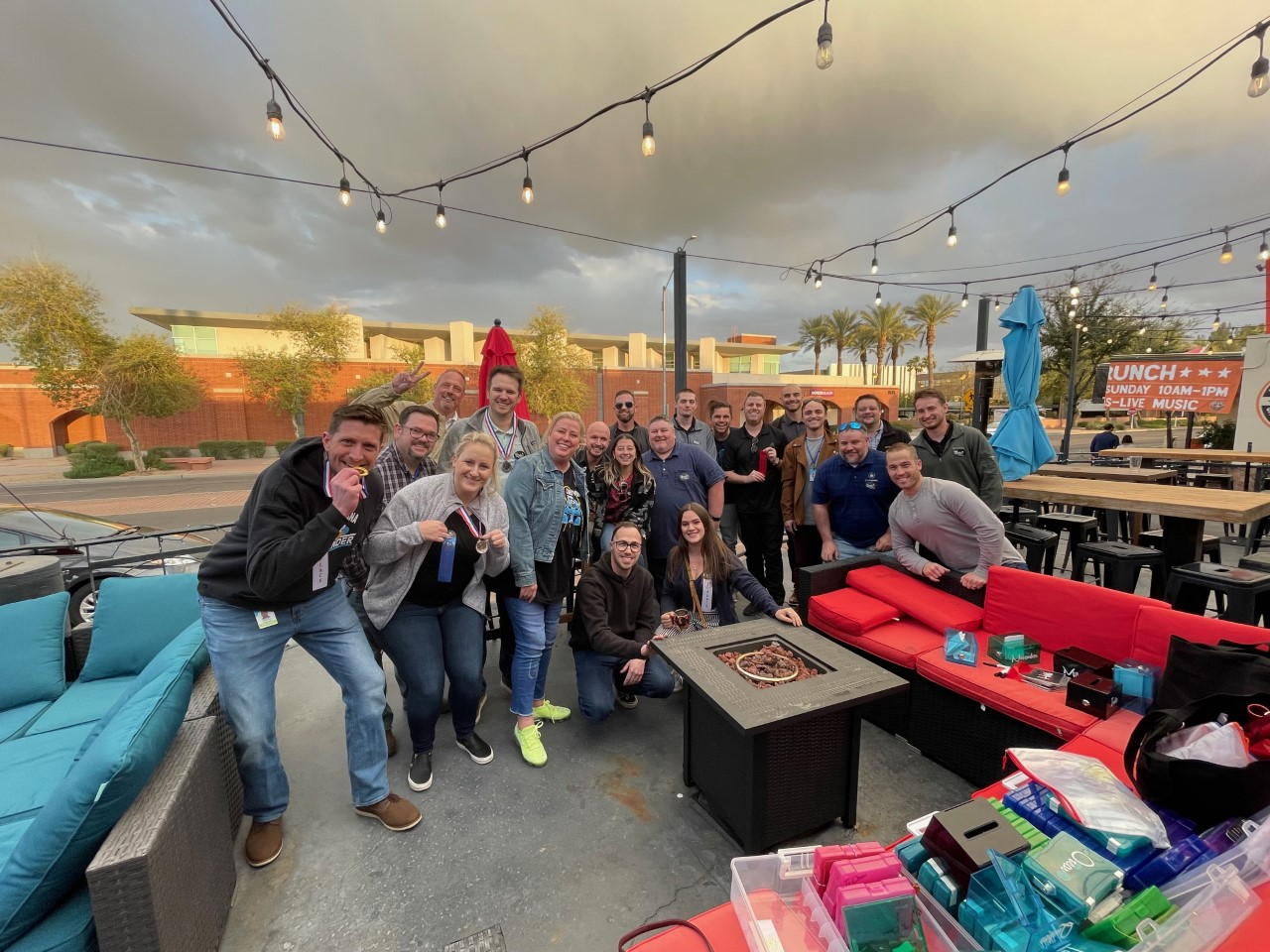A recent business survey by research group i4cp found that more than 71 percent of respondents said their companies are placing more emphasis or plan to place more emphasis on corporate culture. Proponents of good culture have long argued that it can improve prospects in the long run, but it is also true that there is a link between a poor one and declining performance. For instance, toxic culture is widely cited as a factor behind the Great Resignation. If we are going to improve performance, culture needs to be understood and managed — and team building can play a role.
READ ALSO: 100 Best Places to Work and Live in Arizona for 2022
To say companies had to get creative when it came to team building during the pandemic is an understatement. There were so many rules that made it hard to connect including a limited number of people in the office, muted mics during Zoom calls and lots of masks! But the rise of remote work doesn’t mean your company culture has to decay. Katie Dufort is a former sales training executive and the founder of Scottsdale-based Puzzle Rides, a mobile escape room-style scavenger hunt on golf carts. The company offered team building excursions for up to 80 people throughout the pandemic and even more so now that remote work has taken over. Teamwork, combined with elements of the route, are used to solve a series of adventure puzzles where teams have a limited amount of time to reach their final destination. Dufort has mastered next-level team building and her below list ensures an elevated experience for any company.

Think outside the box, literally: Get your team outdoors; don’t have them gather in the office or on Zoom for a virtual Happy Hour. There are numerous advantages to taking a break from the structured work environment to get some fresh air. Being outside lowers stress, restores mental energy, and improves focus and creativity. The International Journal of Environmental Health Research discovered that spending just 20 minutes outside is sufficient to boost well-being, thus promoting inspiration, productivity, and overall workplace happiness.
Mix and mingle groups: Offices can be cliquey, and some new bestie duos are sure to have formed during the pandemic. However, employers’ efforts to encourage broader social connections in the workplace and assist employees in developing strong relationships with one another contribute to a more successful workforce. More equal interaction between team members leads to improved problem-solving and decision-making as well as the development and expansion of each team member’s existing skill sets. Make sure to separate people into unlikely groups so they interact and get to know others they haven’t given a chance to.
Let lower positions lead and management follow: Balance is essential in all aspects of life, including workplace management. Allow lower-level employees to step up on occasion to develop their leadership skills and confidence, as well as to increase employee satisfaction. If Betty is bossy in the office, make sure sweet Sam takes the reins during the activity. You should also allow administrators to lead, while upper managers take a backseat. Offer your employees the chance to shine.
Fun not friction: Friendly competition never hurts anyone, but next-level team building should do just that—allow your team to connect on another level. While healthy workplace competition is a catalyst to increase engagement, communication, and performance, too much competition can backfire. A reported 43 percent of employees will leave the company if they feel pressured to perform at all times. So, keep the activity fun and light.
In addition to mobile scavenger hunts, some cool next-level team building activities to consider are a murder mystery dinner, in-house Shark Tank competition, building something for a cause, dog park showdowns and team retreats.
Author: Katie Dufort is the founder of Puzzle Rides, a mobile escape room-style scavenger hunt on golf carts that takes riders through Old Town Scottsdale and Historic Downtown Prescott. Teamwork, combined with elements of the route, are used to solve a series of adventure puzzles where teams have a limited amount of time to reach their final destination. For more information visit puzzlerides.com




